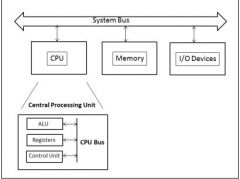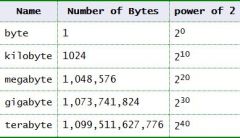![]()
![]()
![]()
Use LEFT and RIGHT arrow keys to navigate between flashcards;
Use UP and DOWN arrow keys to flip the card;
H to show hint;
A reads text to speech;
25 Cards in this Set
- Front
- Back
|
first modern computer came into existence in |
1940s |
|
|
what are the components of hardware |

cpu, memory, storage devices, I/O devices |
|
|
who proposed the idea of programmable computer first? |
charles babbage |
|
|
who introduced the idea of computer architecture based on stored programs? |
john von neumann |
|
|
what was the first computer called? |
ENIAC (Electronic Numerical Integrator and Computer), was built by |
|
|
what was UNIVAC? |
Dr. Presper Eckert and Dr. John Mauchly, two members of the team that built ENIAC, |
|
|
Who was the first client of UNIVAC? |
Their first client was the United States Census Bureau, which |
|
|
what were the first programming languages? |
|
|
|
what is procedural programming? |
Most of these languages such |
|
|
what is the difference between functional and logic programming? |
In functional programming style, evaluation of mathematical style functions |
|
|
who created first web browser? |
It was first created in 1989 by Tim |
|
|
what are virtual machines? |
Software working with hardware allows hardware to be virtualized. A virtual machine is |
|
|
first microprocessor chip |
The first microprocessor chip, the Intel 4004 |
|
|
what is main memory and secondary memory? |
main- RAM, secondary- hard disk. main needs contant electrical supply, secondary doesn't, to keep info. main- closely connected to processor and secondary- * connected to main memory through the bus and a controller. Before using data or program, they are to be copied from secondary to main. |
|
|
what are I/O device? |
Input/output devices are usually called I/O devices. They are directly connected to an electronic module attached to the motherboard called a device controller. For example, the speakers of a multimedia computer system are directly connected to a device controller called an audio card, which in turn is plugged into a bus on the motherboard. |
|
|
what is an embedded system? |
A computer system that is part of a larger machine and which controls how that machine operates is an embedded system. Usually the processor constantly runs a single control program which is permanently kept in ROM (Read Only Memory). ROM is used to make a section of main memory read-only. Main memory looks the same as before to the processor, except a section of it permanently contains the program the processor is running. This section of memory retains its data even when power is off. |
|
|
what is a local-area network |
In a local-area network only a few dozen computers are connected together, usually all located within the same building. Each computer has a network address that the other computers use to access it. Usually the computers share a printer. There may be an especially powerful computer called a server whose hard disk holds application programs and data that the other computers are expected to need. |
|
|
what is a wide area network? |
A wide-area network can connect thousands of computers together over great distances. The long distance connections are made by using optical fiber, telephone lines, microwave radio, and satellite communications. Each computer in the network has a network address (as with local-area networks) to uniquely identify it. |
|
|
what is protocol? |
All these devices use the same method for dealing with data. Without a common method of dealing with data, a large network would become a hopeless muddle. An agreement about how to represent and transmit data over a network is called a protocol. Usually large networks use a protocol called TCP/IP (for transmission control protocol / internet protocol). |
|
|
what is a bit? |
A bit is a single on/off value. Only these two values are possible. |
|
|
what is a byte? |
One bit of information is so little that usually computer memory is organized into groups of eight bits. Each eight bit group is called a byte. |
|
|
how many bytes make up kb etc? |

|
|
|
what is a machine operation? |
Each tiny electronic operation that a processor core can perform is called a machine operation. A processor (a "machine") performs these one at a time, but billions of them in a second. |
|
|
what is a machine instruction? |
A machine instruction consists of several bytes in memory that tell the processor to perform one machine operation. The processor looks at machine instructions in main memory one after another, and performs one machine operation for each machine instruction. The collection of machine instructions in main memory is called a machine language program or (more commonly) an executable program. |
|
|
What does 'processor architecture' mean ? |
The machine operations of a processor and how they have been organized and implemented, |

